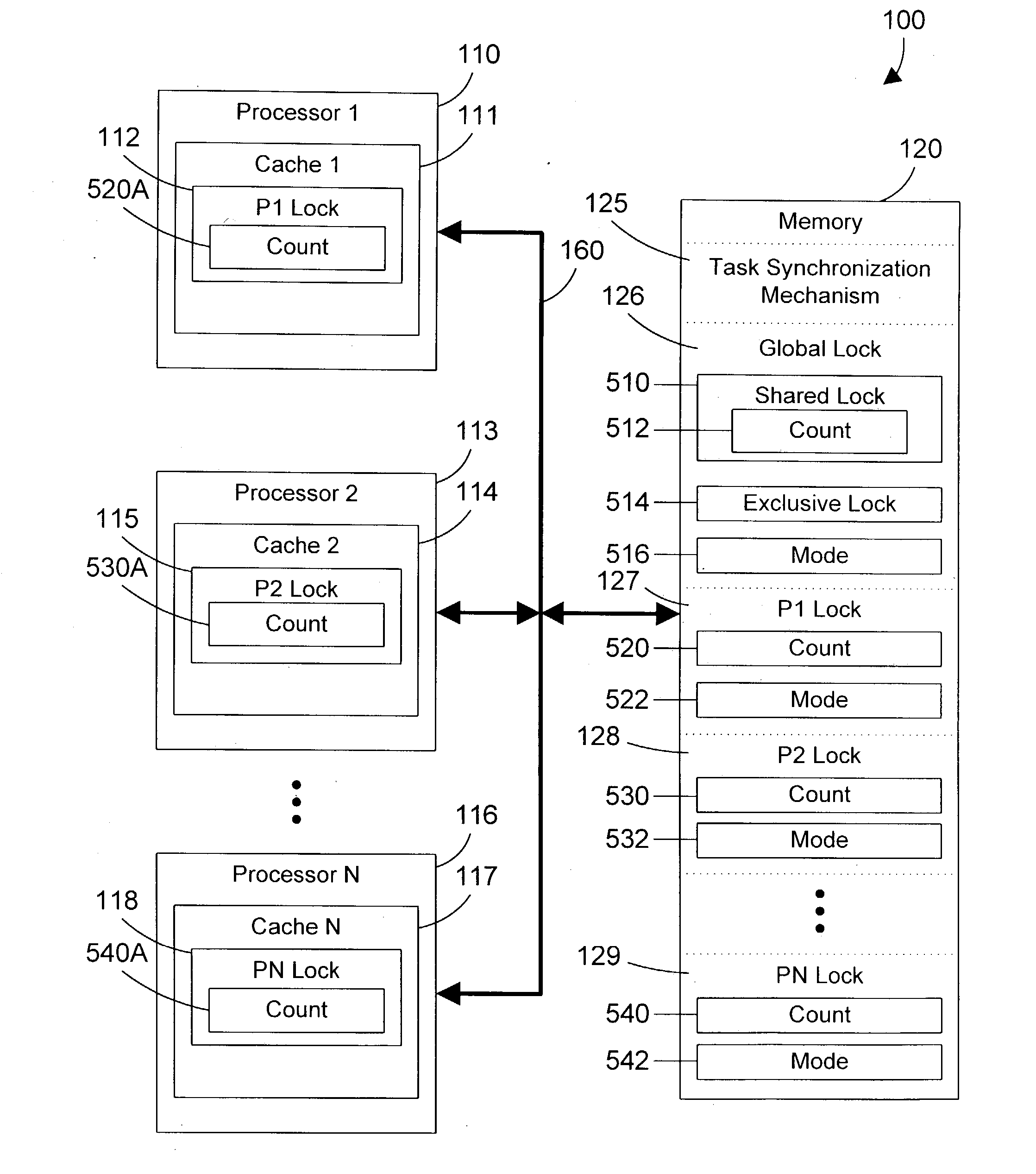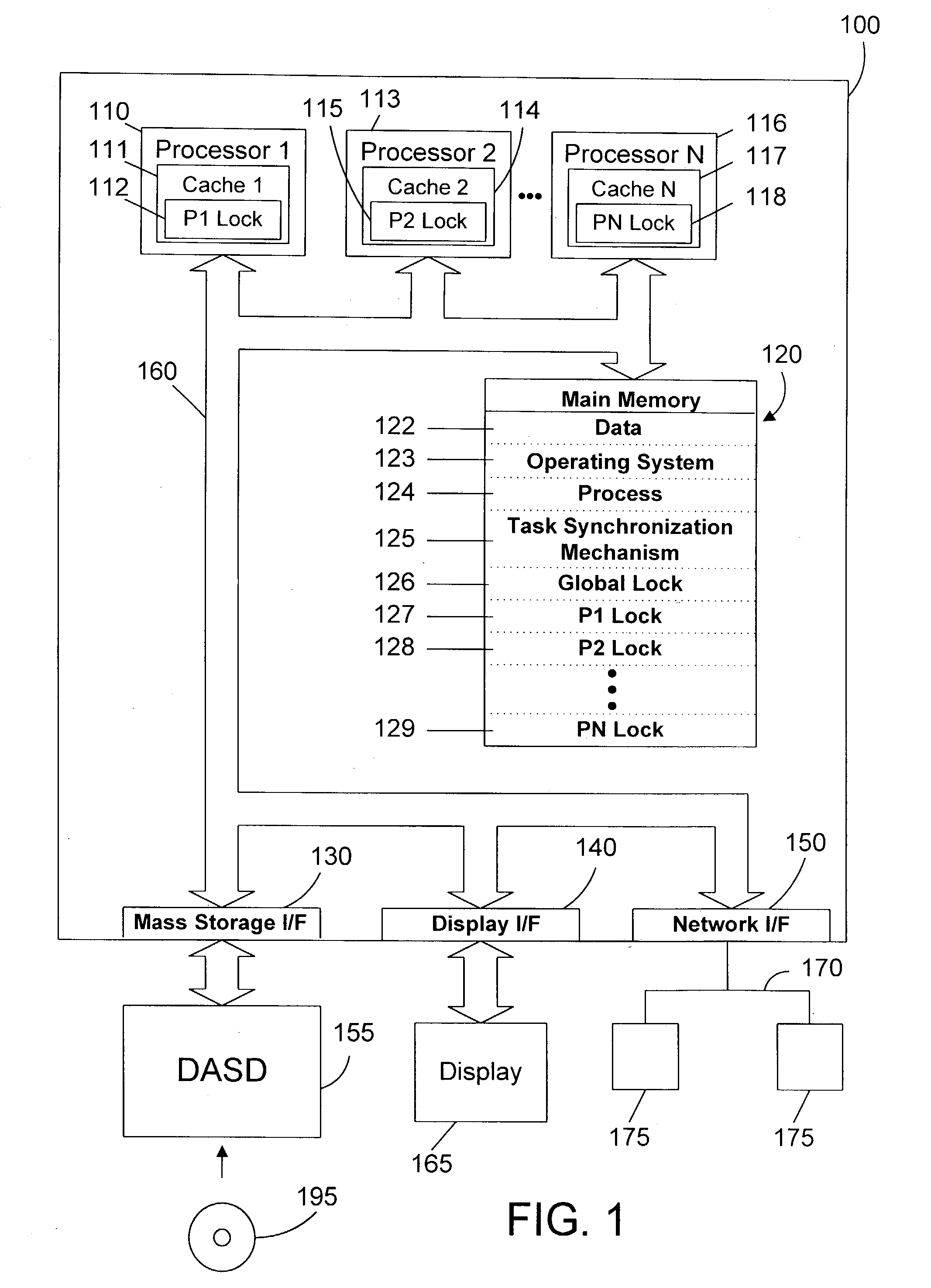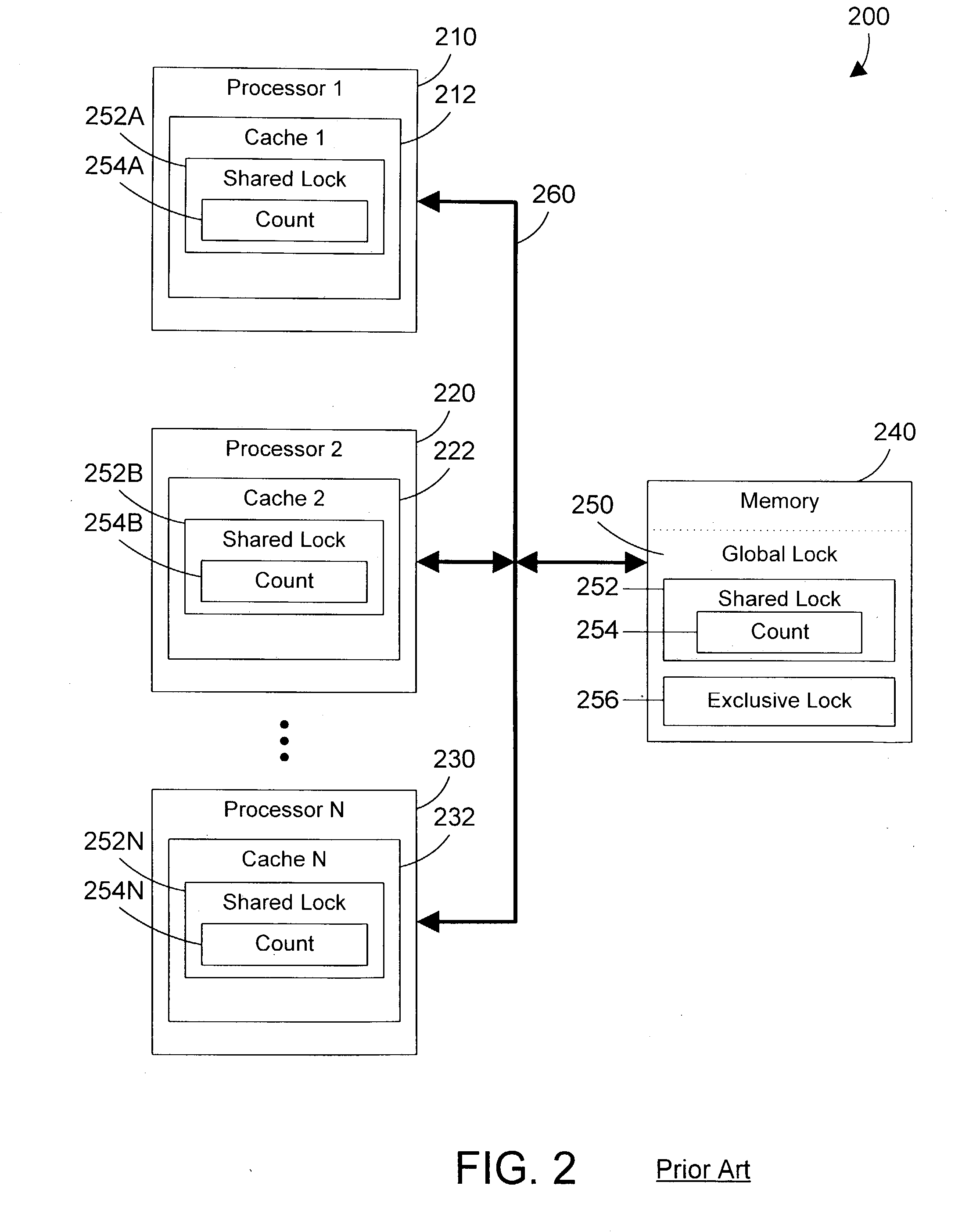Task synchronization mechanism and method
a task and task technology, applied in the field of computer systems, can solve the problems of increasing memory bus traffic, affecting the performance of synchronization, and increasing the overhead of synchronization, so as to achieve significant overhead and performance penalties
- Summary
- Abstract
- Description
- Claims
- Application Information
AI Technical Summary
Benefits of technology
Problems solved by technology
Method used
Image
Examples
Embodiment Construction
[0033] The preferred embodiments eliminate most of the memory bus traffic in the prior art that was required to keep a global shared count current in each processors' cache in a multiprocessor computer system. Instead of providing a global lock that is used to provide both shared and exclusive access, a global lock is generally used for exclusive access, while processor-specific locks are generally used to provide shared access. Because a processor-specific lock is dedicated to a particular processor, there is no copy of one processor's lock in another processor's cache. As a result, the memory bus bandwidth that was required in the prior art to update each processor's cache each time a shared count is updated is eliminated, significantly enhancing the performance of the multiprocessor computer system.
[0034] Referring now to FIG. 1, a computer system 100 is one suitable implementation of a computer system in accordance with the preferred embodiments of the invention. Computer system...
PUM
 Login to View More
Login to View More Abstract
Description
Claims
Application Information
 Login to View More
Login to View More - R&D
- Intellectual Property
- Life Sciences
- Materials
- Tech Scout
- Unparalleled Data Quality
- Higher Quality Content
- 60% Fewer Hallucinations
Browse by: Latest US Patents, China's latest patents, Technical Efficacy Thesaurus, Application Domain, Technology Topic, Popular Technical Reports.
© 2025 PatSnap. All rights reserved.Legal|Privacy policy|Modern Slavery Act Transparency Statement|Sitemap|About US| Contact US: help@patsnap.com



